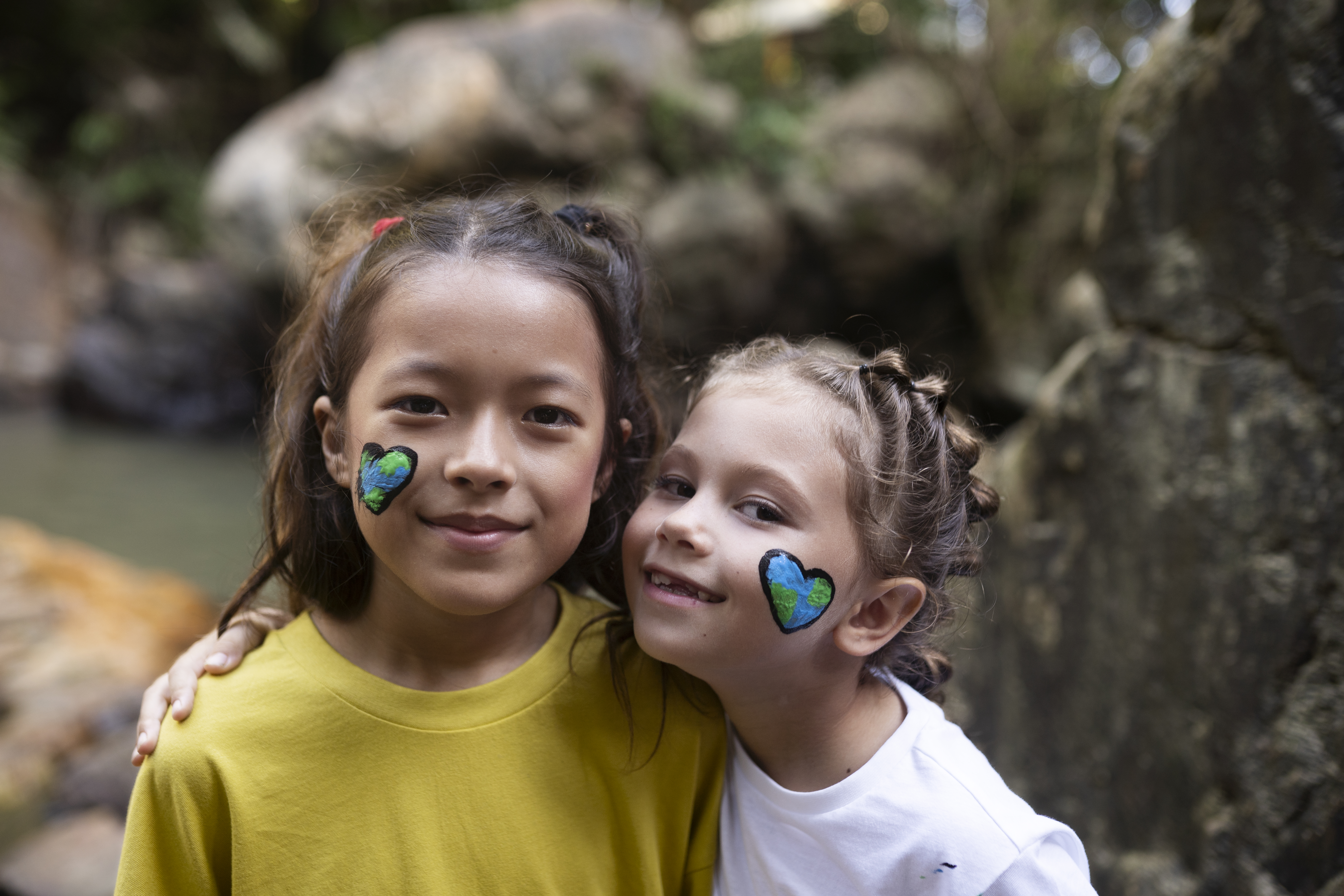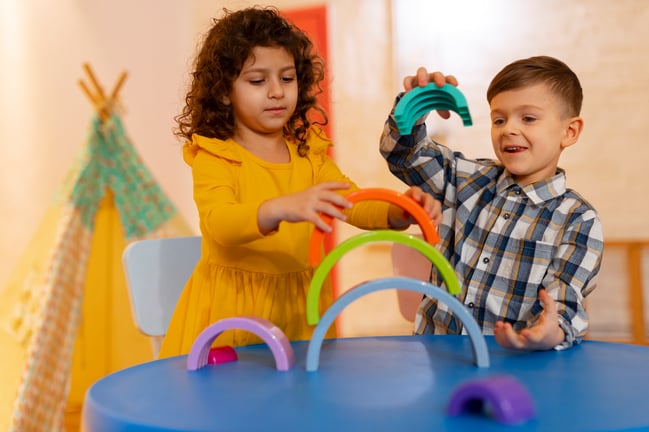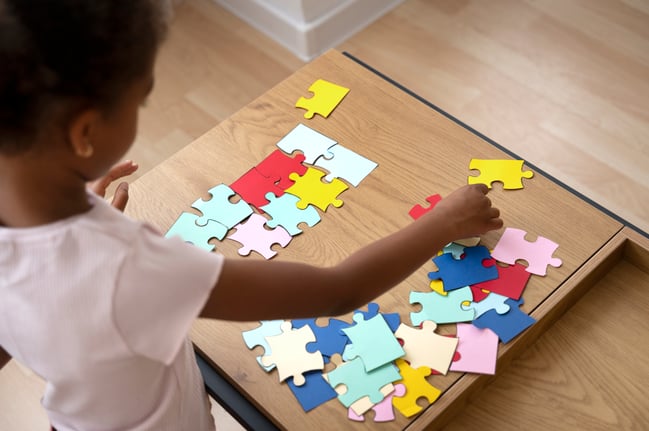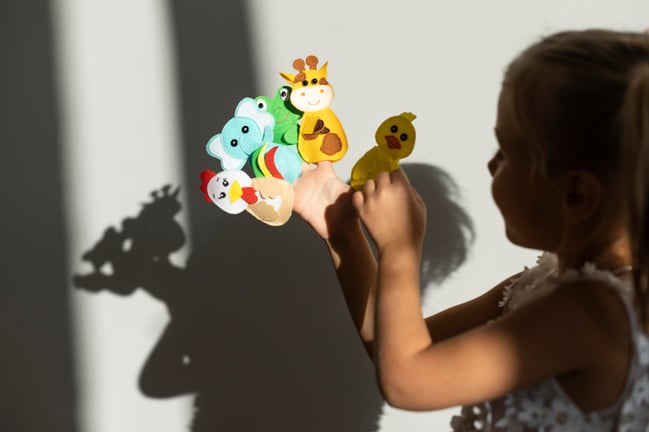
Approaches to Learning
Older Preschoolers (45 to 60+ months)
Components and Developmental Indicators
Older Preschoolers (45 to 60+ months)
Components and Developmental Indicators
Developmental Indicators
AL Goal-1: Children demonstrate curiosity and eagerness and express interest in the world around them.

Share discoveries with a trusted person when reunited with that person at a later time.

Demonstrate eagerness to find out more about other people, discover new things in their environment, and talk about these things with others.

Choose to participate in a wide assortment of activities and demonstrate willingness to try new experiences.

Demonstrate interest in mastering new skills (writing name, riding a bike, dancing, building skills).
AL Goal-2: Children actively seek to understand the world around them in play and everyday tasks.

Ask questions and wonder about things that interest them (ask questions about future events, describe changes they notice in the seasons).

Choose among different ways to explore the environment based on past experience (use a magnifying glass that the class used previously to explore something new).

Use what they know from past experience to understand a current situation (get an umbrella to go outside because it is raining).
Developmental Indicators
AL Goal-3: Children demonstrate initiative and effort in play and everyday tasks.

Demonstrate increasing independence, initiative, self-direction, and purpose when making choices (“I’m going to the block area to make a track for my race car.”).

Demonstrate self-help skills, independently identifying and seeking things they need to complete activities or carry out play scenarios (gather supplies and create a sign for the block building they created).


Move independently to another activity once their current activity is completed.
AL Goal-4: Children are engaged and maintain focus in play and everyday tasks.

Consistently remain engaged in self-directed activities (finishes a card they chose to make for a loved one).

Sometimes able to ignore irrelevant information when focusing on a task (sorting buttons by color regardless of shape).
AL Goal-5: Children persist at challenging activities in play and everyday tasks.

Persists in working to complete tasks, trying different ways until successful (when a block tower falls, try putting the blocks together in a different way to build the tower again).

Plan and follow through on longer-term tasks (planting a seed and caring for the plant).

Keep trying until a challenging activity is completed, despite distractions or interruptions (multi-piece puzzle started before lunch and completed later).

Seek help and work cooperatively with others to complete a challenging activity (ask and work with peers to build a block bridge across the water table).
Developmental Indicators
AL Goal-6: Children are willing to try new and challenging experiences in play and everyday tasks.

Expand their sense of self-reliance.

Approach new experiences independently.

Ask to participate in new experiences that they have observed or heard about.

Independently seek new challenges.

Demonstrate resiliency and coping skills when faced with challenges (after spilling paint on their favorite shirt are able to help clean up and continue painting).
AL Goal-7: Children use a variety of strategies to solve problems in play and everyday tasks.

Describe the steps they will use to solve a problem.

Apply their prior knowledge to evaluate different strategies for solving a problem.

Explain how they reasoned and solved a problem to another person.

Demonstrate satisfaction or delight when solving a problem or completing a task.

Exhibit flexibility in considering alternative suggestions offered by others.

Quickly recover from setbacks when working and playing with others.
Developmental Indicators
AL Goal-8: Children engage in increasingly complex play.

Develop and sustain more complex pretend play themes in cooperation with peers.

Use more complex and varied language to share ideas and influence others during play.

Choose to use new knowledge and skills during play (add features to pretend play scene related to class project, write list, build a structure like that displayed in a book they have read).

Demonstrate their cultural values and “roles” through play (uses a blanket as a shawl while dancing).
AL Goal-9: Children demonstrate creativity, imagination, and inventiveness in play and everyday tasks.


Use materials or actions in increasingly varied, creative, and resourceful ways to represent experiences or ideas.

Develop creative solutions in play and daily situations.

Make up stories, songs or dances for fun during play.




